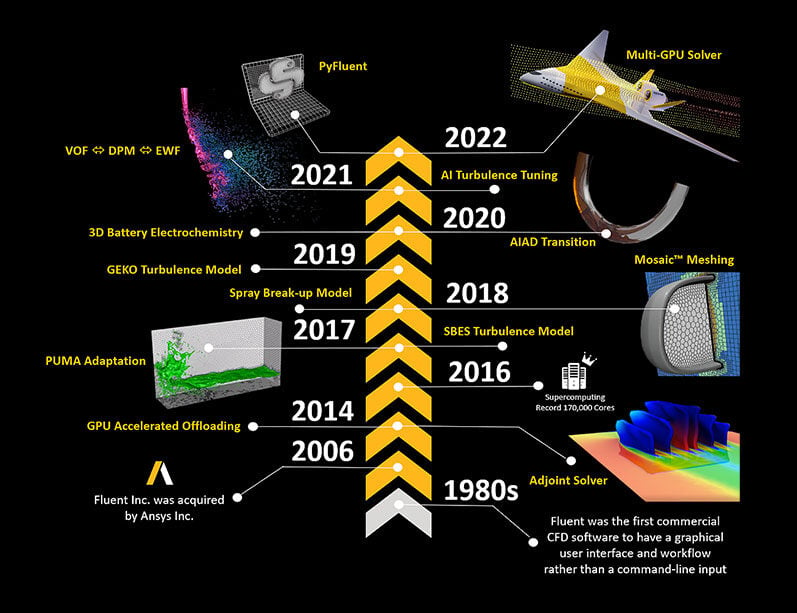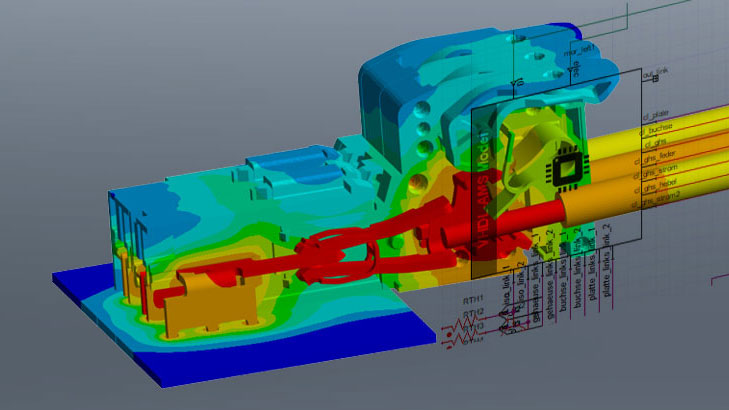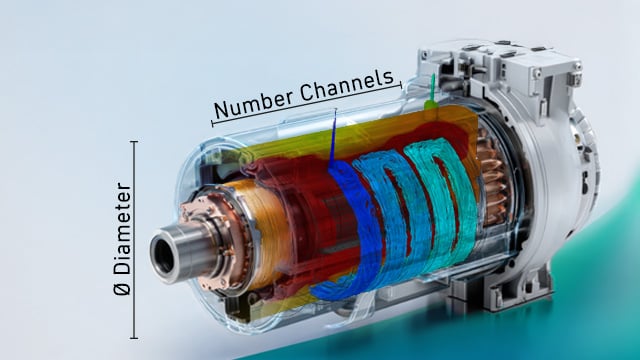Speed, Ease of Use and AI/ML in Computational Fluid Dynamics
Dr.-Ing. Fabian Findeisen
24.10.2024
Trends in CFD
More speed through GPU use, improved usability with the new web UI and the integration of artificial intelligence (AI) and machine learning (ML): Computational fluid dynamics (CFD) has evolved rapidly in recent years. With this article, we start a series on the developments with which Ansys is significantly advancing CFD.
Trend 1: Speed with GPU simulations
The use of graphics cards (GPUs) with their streaming multiprocessors is revolutionizing the world of CFD simulations by drastically reducing computing times. GPUs allow engineers to perform complex calculations faster than ever before. This leads to shorter development cycles and faster time to market. This speed boost also makes it possible to create much more detailed and complex models, which in turn provide more precise and reliable results.

Trend 2: Improving Usability with pyAnsys and Web UI
The Python ecosystem around pyAnsys not only offers easier automation of simulation workflows, it is also the basis for a new generation of user-friendly user interfaces such as the Web User Interface (Web UI). The web UI is intuitive and allows users to quickly and easily create models locally or remotely. Since the GUI runs in the web browser, it is platform and hardware independent. Of particular note is the ability to work "on-the-fly": calculation settings and post-processing elements can be changed while the calculation is in progress. This improves the workflow considerably.

Trend 3: AI and ML in CFD simulation
Ansys and CADFEM are working hard to integrate artificial intelligence and machine learning into the world of simulation. These technologies are already enabling extensive design optimizations that were previously unthinkable. Data-driven methods train neural networks to quickly achieve precise results for similar boundary conditions or new geometries. This offers enormous potential to use existing data pools to massively accelerate and improve development and decision-making processes.
The future of CFD simulations is characterized by continuous innovation and technological advancements. With increasing computing power and improved algorithms, simulations are becoming even more precise and faster. The integration of cloud computing makes it possible to perform extensive calculations more efficiently and often more cost-effectively. In addition, the combination of CFD with other disciplines such as structural dynamics and electromagnetics is becoming increasingly important – incidentally, a particular strength of Ansys simulation solutions.

Ansys is a leader in flow simulation. The company is setting new standards in the above-mentioned trends in order to further push the boundaries of simulation and open up new application possibilities. CFD simulations are not only becoming faster and more user-friendly, but also easier.
Stay tuned for more posts in this blog series, where we'll dive deeper into each of these trends. In the next few articles, we will focus on simulation on graphics cards.
Do you always want to be informed about the latest features? Then don't miss our regular update webinars for every new Ansys release.

Ansys CFD
Make fluid flows visible with Computational Fluid Dynamics (CFD). Analyze particle and material flows with Discrete-Element-Method (DEM) and SPH (Smoothed-Particle Hydrodynamics).




